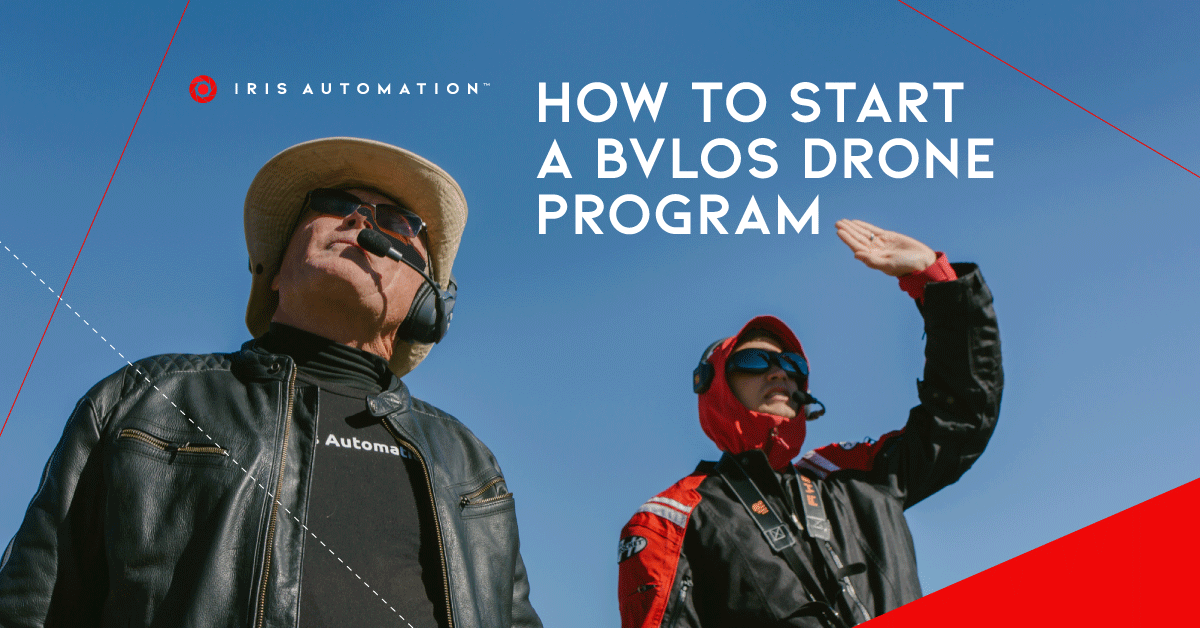Many of the questions we get from program managers focus on understanding what it takes to evolve a drone program to conduct Beyond Visual Line of Sight (BVLOS) operations.
As drone technology and regulations mature, organizations are increasingly adopting this technology to gain a competitive edge. While it is easier to obtain regulatory approvals for unmanned aircraft operations that operate under visual sight rules, these use cases and benefits are limited and may hinder your ability to expand the program to its full potential.
Why BVLOS?
The benefits could not be more clear. Having beyond visual line of sight operational capabilities truly unlocks your drone program’s potential—enabling you to integrate drone operations into every aspect of your organization without requiring a corresponding ramp-up in pilot hiring and training. It enables you to fly your drones further and longer while gathering more data per flight than ever before.
Benefits of BVLOS drone operations include:
- Enabling pilots to launch and operate drones from an incident response center without going on field
- Increasing the volume of data gathered per flight
- Use in situations dangerous to humans (fire inspection) or where it will be faster (medical equipment delivery in rural areas) than humans
- Enabling organizations to operate more flights per pilot and reducing overheads
Flying Beyond Visual Line of Sight (BVLOS) is the future of the drone industry, and Iris Automation is working tirelessly to make it an everyday reality.
Based in the United States, Iris Automation is not only well equipped to assist you with your FAA BVLOS waiver needs, but actively works with Civil Aviations Authorities (CAA) around the world and is experienced in providing regulatory support internationally.
We are the long term partner you need to truly get your drone program off the ground.
To help you get there, we’ve created a step-by-step guide for you to consider before starting a drone program. Get the Complete Guide to creating your BVLOS program here.
A 6-step Program: Getting your BVLOS Program off the Ground
Step 1: Select your use case
Everything starts from this question: What are you trying to accomplish with your drone program? The use case is important because it determines the Return on Investment (ROI) of your program, the type of aircraft and hardware you will need to purchase, and the regulatory permissions you will need to pursue.
Step 2: Understand your personal motivations and scale to the organization
At the heart of every successful drone program is a relentless, motivated program manager who truly believes in the power of drones in transforming their business. The harsh reality is that commercial drone operations are still very much in the early stages of development as the technology, regulations, and best practices are firming up. Drone program managers are essentially early adopters, technology evangelists, lobbyists, end users, AND product managers all rolled into one. Consider your personal motivations and career aspirations and map them to the organization’s goals to make sure that they are aligned.
Step 3: Select the right aircraft, software, and hardware
This is important to get right at the onset of your drone program—picking the right aircraft is very much driven by your use case. For example, flying long-range survey missions requires a fixed wing Unmanned Aerial Vehicle (UAV) with a sensor array on-board. In contrast, inspecting communication towers requires a quadcopter drone with a high-resolution camera.
Step 4: Get executive buy-in with vision
It doesn’t matter if you’re a drone pilot fresh out of training and starting a drone program or if you’re a seasoned drone program manager looking to scale—at some point you will have to pursue management buy-in. In any large organization, implementing a new technology activates a new set of stakeholders with end goals that may be different from yours.
Step 5: Build the operational key ingredients
A good BVLOS program is designed to be a highly effective and reliable operation. The recipe for success begins with these four key ingredients:
- Detect-and-Avoid (DAA): DAA refers to the capability to see, sense, or detect conflicting traffic or other hazards and take the appropriate action to ensure the safety of humans and property. Iris Automation makes this solution available to your organization with Casia Detect-and-Avoid.
- BVLOS Operational Regulatory Permissions and Certification: In order to run a commercial BVLOS program in the United States, you will need to obtain a Part 107.31 waiver (a waiver from being required to have visual line of sight to the aircraft under Part 107) or a Part 135 certification. Iris Automation can assist you with obtaining BVLOS approval through our Regulatory Resource Center
- Mission Planning: Before your drone even leaves the ground, a lot of preparation needs to be done. Carefully programming the details of your drone’s flight plan with modern tools that provide safety features like geo-fencing and low altitude authorization and notification (LAANC) is necessary for successful autonomous operations.
- Concept of Operations (CONOPS): The basic premise of a CONOPS document is to enable the executing agent to understand the purpose behind what must be done. CONOPS should relate a narrative of the process to be followed. It must also define the roles of the various stakeholders involved in the process. It should offer a clear methodology to realize the goals and objectives of the approach to software development/acquisition of core assets and systems.
Step 6: Start your drone program as a VLOS program and evolve VLOS to BVLOS
It is much easier to start a drone program as a visual line of sight operation, especially if you have never created a drone program before. Starting out as a VLOS program helps you build the operational culture to manage a more complex operation, including building a heritage of safe flight operations, hiring the right team of pilots and flight operators, and developing your team’s proficiency in mission planning and following the CONOPS.

